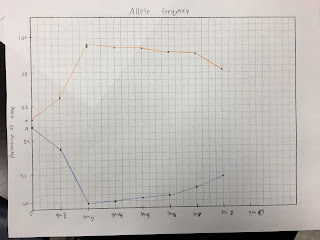The type of natural selection exhibited in this lab was directional selection, where one extreme phenotype, in this case the pincher, was favored so the phenotypes shift towards that. Stabilizing selection is where the average phenotype in the middle are favored and extremes are not. This keeps the population from changing. Disruptive selection is when both extremes are favored and the graph splits in two. This is often the beginning of speciation.
http://www.course-notes.org/biology/topic_notes/33_behavioral_ecology/fecundity_selection
New species are created in a process called speciation. When a species is reproductively isolated, they begin to drift apart until they are two different species. They become different species in a process called evolution. There is evidence to prove evolution exists. There are certain traits that modern day organisms have that are useless but would have been useful to ancestors. Also, similarities between species point to a common ancestor in the distant past.
Earths vast history is split up into eras, periods, and epochs. Mass extinctions mark the end of many of these. Each time period has different characteristics.
This unit was not a very difficult unit, but the scale of the Earth's timeline is hard to comprehend. Some questions I have are how did unicellular organisms turn into multicellular organisms and then plants and animals. Also how did asexually reproducing organisms evolve and become sexually reproducing.
I have had a chance to be more assertive in the geological timeline project. I have realized that there is a time to be a leader and be slightly more aggressive for the better of the group, but also a time to sit back more passively to better the group. But mostly, I have been assertive by leading with clear logical steps and listening to the ideas of others.


No comments:
Post a Comment